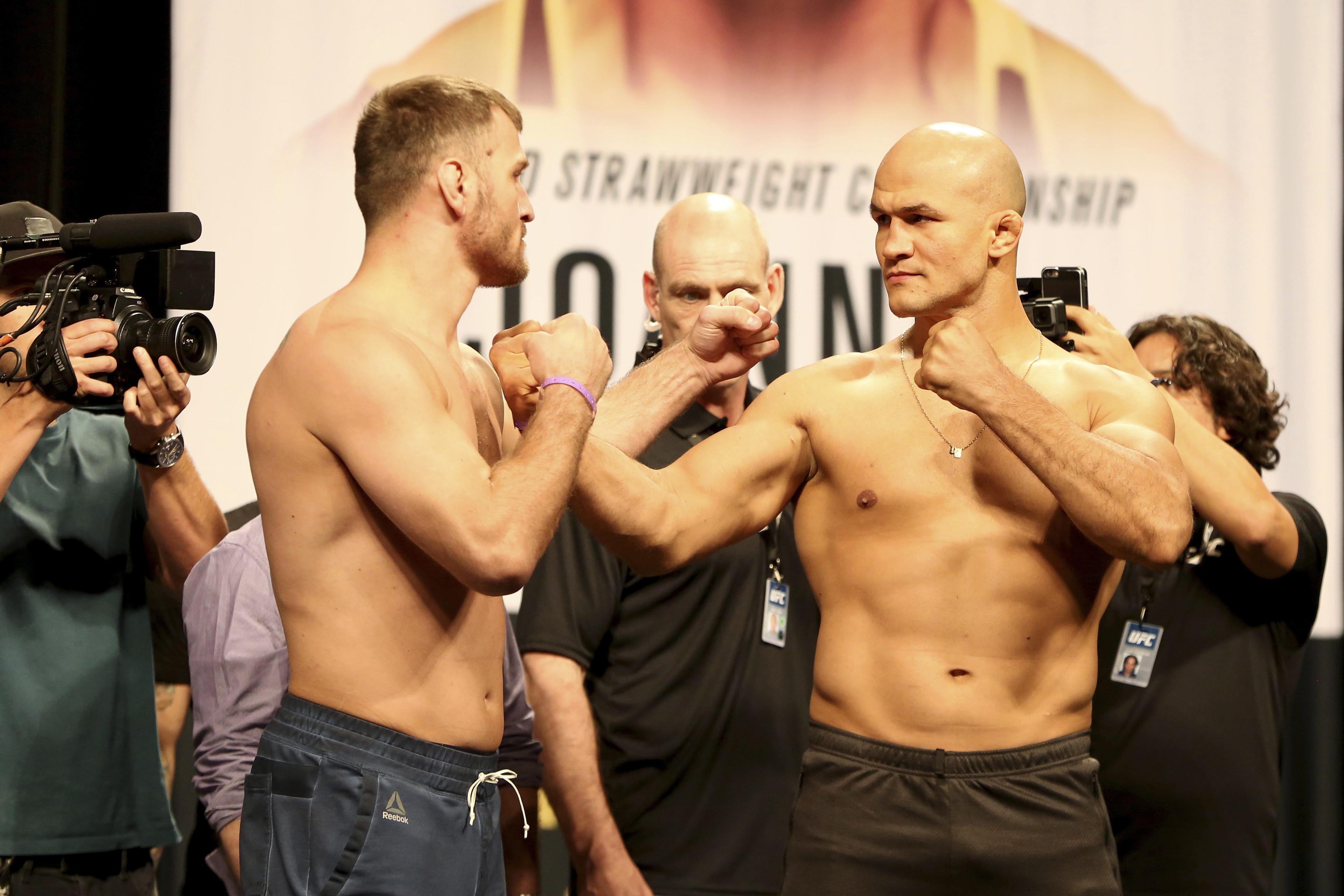Subscribe to our newsletter
We'll send you bets and resources to help you profit
What are the UFC Weight Classes – Men’s & Women’s MMA Weight Classes
AP Photos
Fighting in the UFC hits differently than fighting in the schoolyard. When kids become adults, flailing slaps become precise punches and hair-pulling evolves into years of rigorously sharpened grappling expertise — with that, the chance for permanent damage when facing bigger opponents multiplies.
Athletic commissions supervise the adult action with an eye for harsh punishments and part of this involves the UFC weight classes.
The UFC avoids brutality by enforcing weight classes in accordance with athletic commission guidelines. New bettors need to know which one they are betting on to improve bet quality. This article outlines each UFC weight class and associated limits.
What Weight Classes Are In The UFC?
In the UFC, the current weight divisions are:
- Heavyweight
- Light Heavyweight
- Middleweight
- Welterweight
- Lightweight
- Featherweight
- Bantamweight
- Flyweight
- Strawweight
Men compete in every division except strawweight.
Women compete in the featherweight, bantamweight, flyweight and strawweight divisions at the same weight limits as men. Dana White revealed in 2021 that the women’s featherweight division may be discontinued when champion Amanda Nunes retires.
What Are The Weight Limits In Each UFC Weight Class?
Heavyweights live up to their namesake, carrying the most size at a 265-pound/120.2-kilogram/18.9-stone maximum.
Light heavyweights compete at a 205-pound/93-kilogram/14.6-stone limit.
Middleweights fight at a 185-pound/83.9-kilogram/13.2-stone weight limit.
Welterweights battle at a 170-pound/77.1-kilogram/12.1-stone weight limit.
Lightweights used to be the smallest division at a 155-pounds/70.3-kilograms/11.1-stone weight limit.
Featherweights float around the Octagon at a 145-pound/65.8-kilogram/ 10.4-stone maximum.
Bantamweight contests occur at a 135-pound/61.2-kilogram/ 9.6-stone weight limit.
Flyweights don’t possess wings, but their reflexes create that illusion at a 125-pound/56.7-kilogram/8.9-stone weight limit.
Strawweight remains the lightest weight class with its 115-pound/52.2-kilogram/8.2-stone weight limit.
Weight minimums technically exist too. Each fighter must weigh at the maximum of the prior weight class to compete in the next one up, albeit it’d be fairly foolish to concede that much size and inherent strength to a larger opponent.
Can UFC Fighters Compete In Multiple Divisions?
A fighter’s natural frame and skill set lends itself to an optimal division, but UFC athletes are welcome to compete in any division, as long as they consistently make weight and avoid athletic commission issues (or Dana White’s bad side).
Conor McGregor (lightweight and featherweight), Daniel Cormier (heavyweight and light heavyweight), Amanda Nunes (women’s featherweight and bantamweight) and Henry Cejudo (bantamweight and flyweight) held the rare distinction of “champ-champ” status.
Nowadays it is a highly sought feat of holding a championship belt in two weight divisions simultaneously. Randy Couture (light heavyweight and heavyweight), B.J. Penn (lightweight and welterweight) and George St. Pierre (middleweight and welterweight) captured championships in multiple divisions, but never held multiple at once.
What Are Openweight Tournaments?
Openweight matches and tournaments are when weight restrictions are completely lifted in combat sports. Famed Japanese UFC rival Pride hosted many. Larger fighters generally sacrifice cardiovascular endurance and speed in exchange for power and ability to absorb greater punishment. The reverse applies to smaller combatants.
Are There Openweight UFC Tournaments?
Openweight tournaments etch a crimson mark in the UFC’s history but haven’t happened in decades and likely never will again. The early days of the UFC favored barbarism over polished production.
Royce Gracie introduced much of the ignorant sports world to Brazilian Jiu-Jitsu via submitting considerably larger opponents. Excitement over the perceived innovations bubbled the underground UFC to the surface. John McCain led a charge to strike the organization back down, declaring MMA “human cockfighting,” which caused the UFC to lose deals and good faith with the media.
In an attempt to clean up its raw image, the UFC split combatants into heavyweight (above 200 pounds) and lightweight (below 200 pounds) classifications in 1997. Weight divisions have evolved with the UFC’s acquisitions and athletic commission regulations since then.
Can People Other Than Professional Martial Artists Compete in UFC?
The scenarios are thankfully rare, but Dana White prioritizes the word “prize” in prizefighting and consequently makes occasional exceptions. The most notable case of non-professionals competing in the UFC is former WWE champion CM Punk failing to transition from the ring to the Octagon. UFC veteran Mickey Gall dominated Punk in less than three minutes.
Punk then lost a one-sided decision to literal mailman Mike “Thriller” Jackson. Couture proved MMA requires an overall game when he submitted former boxing champion James Toney in the first round. Former NFL Pro Bowl defensive end Greg Hardy fared better than his predecessors, achieving a 7-5 record in the UFC and even lasting the distance with No. 7 heavyweight Alexander Volkov.
Also check out, what is UFC no contest bet!
